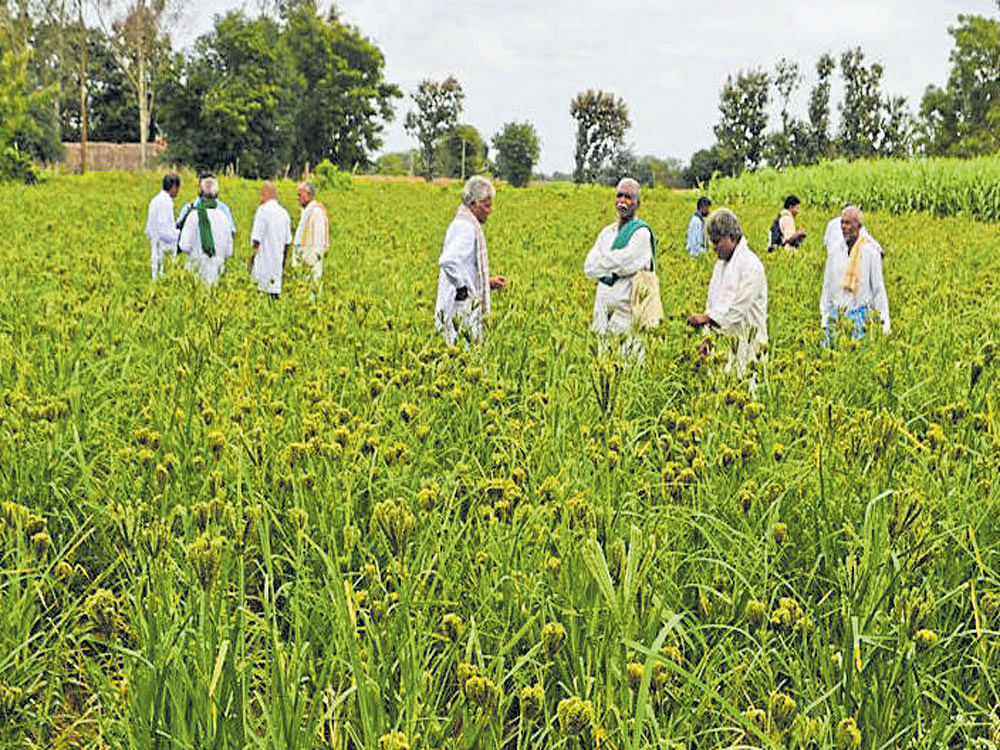
A traditional finger millet cultivation method that has some resemblance to System of Rice Intensification (SRI) method of paddy cultivation has come to the rescue of farmers in some villages of Karnataka.
Take the case of Shrenikaraju, a farmer in Chinnikatte village of Haveri district. Due to the lack of rains, he changed the crop from paddy to finger millet. He followed the traditional ‘guli ragi’ method to grow finger millet and reaped a good harvest.
It is similar to SRI method in terms of spacing and weeding. Reintroduced in the fields two decades ago, the method has become popular among farmers because of its increased productivity, which is almost the double of what one gets from conventional methods. Mallikarjuna Hosapalya, who has researched and documented the method, says, “As per oral history, the method originated in Shikaripura region. Initially, cotton and chilli were grown in this method. Later, farmers successfully tried finger millet.”
Initially, the field is prepared and rows are made at a distance of 2.5 feet in perpendicular directions. Two saplings (20 to 25 days old) are planted at each intersection. Wide spacing between the plants allows the roots to spread properly. As only two saplings are placed in one pit, they absorb maximum nutrients. Two interesting practices that are involved in this method are the use of koradu (ox-drawn wooden implement) and edekunte (harrow). Edekunte is used for weeding and raising the soil level.
Between 15 and 45 days after transplanting, the koradu is dragged four to five times across the field in different directions, stimulating a profuse growth of plants both below and above the ground. It helps improve the quality and size of the ear heads, thus increasing the yield. Due to the broader root system and more productive ear heads, farmers get a yield of about 18 quintal per acre, while in conventional methods, the yield is about 10 to 12 quintal. There are instances of getting an yield of 25 quintals per acre too. The method requires less labour and seeds. One kg of seed is enough for one acre area, while in other methods the seed requirement is six to eight kg for one acre.
This method is found to be yielding well in areas with poor rainfall as well. The method became popular after the farmers of Chinnikatte village successfully tried it out and has successfully spread to other states. Subsequently, it got media attention and was appreciated by academic researchers — both national and international. Norman Uphoff, a professor of International Agriculture at Cornell University in USA, visited Chinnikatte and felt that the method could be introduced in other countries too. “Native varieties like unde ragi, edagu ragi and bulde ragi are best suited for this method. Unde ragi is a 4.5-month crop and produces good fodder too,” says Mookappa Poojar, a farmer, adding that improved varieties may not bring good results in this method.
In a recent workshop organised at Hanumanamatti Krishi Vijnana Kendra in Haveri, farmers from Karnataka, Chhattisgarh, Tamil Nadu and Andhra Pradesh participated and shared their experiences of growing finger millet in this method. “A grassroots innovation from Karnataka has helped farmers in many states. It is time research institutions approve this method developed by farmers,” says C Shanthakumar, coordinator, Sahaja Samrudha farmers group that convened the workshop.